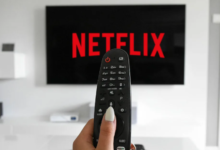How to Troubleshoot MacBook to TV HDMI Issues

When connecting a MacBook to a TV via HDMI, users often face issues like no signal or audio problems. These interruptions can disrupt your viewing experience. Fortunately, troubleshooting these problems is often straightforward. By following a few steps, you can have your MacBook and TV working harmoniously in no time. This guide covers common solution techniques, addressing everything from checking your HDMI connections to fine-tuning your audio settings. Whether you’re a tech novice or a seasoned professional, our step-by-step instructions will assist you in diagnosing and solving HDMI-related problems efficiently.
Why Is There No Signal on Your TV?
Seeing the “No Signal” message can be frustrating. Several factors might cause this issue when connecting your MacBook to your TV via HDMI.
Check HDMI Cable and Ports
First, inspect the HDMI cable and ports. A faulty cable or port is the most common reason for connection issues. Try using a different HDMI cable to rule out a defective cable. Examine both ends of the HDMI cable to ensure they are fully seated in the MacBook and TV’s HDMI ports. Over time, ports can accumulate dust or suffer from wear and tear, affecting the connection. If possible, test both MacBook and TV ports with other devices to confirm their functionality.
Ensure Correct Input Source on TV
Next, ensure that your TV is set to the correct HDMI input source. Modern TVs have multiple HDMI ports, and you need to select the right source. Use the TV remote to cycle through the input options until you find the one corresponding to the port you used. If the TV’s label for HDMI ports isn’t clear, refer to the manual for guidance. Matching the correct input source is crucial for displaying your MacBook’s output on the TV screen.
Fixing Audio Problems When Connecting MacBook to TV
Sometimes the video works, but there is no audio. Here’s how to resolve this common problem.
Selecting HDMI as the Audio Output
Begin by selecting HDMI as the audio output on your MacBook. Go to “System Preferences” > “Sound” > “Output.” Ensure that the selected output device is “HDMI” or the name of your TV. If not, choose it from the list of available options. This directs all sound from the MacBook to play through the TV speakers.
Adjusting TV Audio Settings
Next, adjust the TV’s audio settings. Navigate through your TV’s menu to its audio settings. Ensure the audio output is set to “External Speakers” or an equivalent option for receiving sound via HDMI. If you continue to have issues, consult your TV’s manual for specific instructions on configuring HDMI audio settings. Properly adjusting these settings should establish a clear audio connection from your MacBook to the TV.
How to Set Up Display Preferences for Best Results
Optimizing your display preferences maximizes your viewing experience.
Using Mirror or Extend Display Options
Your MacBook offers two primary display options when connected to an external display: mirror and extend. To select one, go to “System Preferences” > “Displays” > “Arrangement.” Choose “Mirror Displays” to show the same content on both screens or “Extend Display” to use the TV as an additional screen. For presentations or watching videos, mirroring might be more useful. Extending your display is ideal for multitasking with different content on each screen.
Adjusting Resolution and Refresh Rate
To ensure the best display quality, adjust the resolution and refresh rate settings. In the “Displays” menu, select “Scaled” and choose a resolution that matches your TV’s capability. A higher resolution ensures a sharper image but might affect performance. Adjust the refresh rate if necessary, which determines how many times the screen updates per second. Most TVs work best at 60Hz, but you can adjust based on your preference and the capabilities of both devices.
Common Troubleshooting Tips for HDMI Issues
When simple solutions don’t work, try these common troubleshooting tips.
Restarting MacBook and TV
A classic but effective method is restarting both the MacBook and the TV. Sometimes the issue is due to a temporary glitch, and a restart can resolve it. Turn off both devices, wait a few seconds, and then turn them back on. This can reset the connection and resolve minor software conflicts.
Resetting SMC and NVRAM
If restarting doesn’t help, consider resetting the SMC (System Management Controller) and NVRAM (Non-Volatile Random-Access Memory) on your MacBook. To reset SMC, shut down your MacBook, then press and hold shift + control + option keys along with the power button for 10 seconds. Release and then turn on your MacBook. To reset NVRAM, turn off the MacBook, then power it on and immediately hold option + command + P + R keys for about 20 seconds. This can clear settings that might be causing issues.
Conclusion
Knowing how to connect macbook to tv with hdmi can help you slove a lot of problems. Facing HDMI issues when connecting your MacBook to your TV can be frustrating, but most can be resolved with basic troubleshooting steps. Start by checking the HDMI cable and ports, and ensure your TV is on the correct input source. Address audio issues by selecting HDMI as the audio output and adjusting your TV’s audio settings. Optimize the display settings for the best visual experience by choosing between mirror and extend options and adjusting resolution and refresh rate. If problems persist, restart both devices and consider resetting the SMC and NVRAM on your MacBook. By following these simple steps, you can often resolve HDMI issues quickly and enjoy a seamless viewing experience. Remember, when in doubt, consult your device manuals or seek professional assistance to ensure all settings are properly configured.







